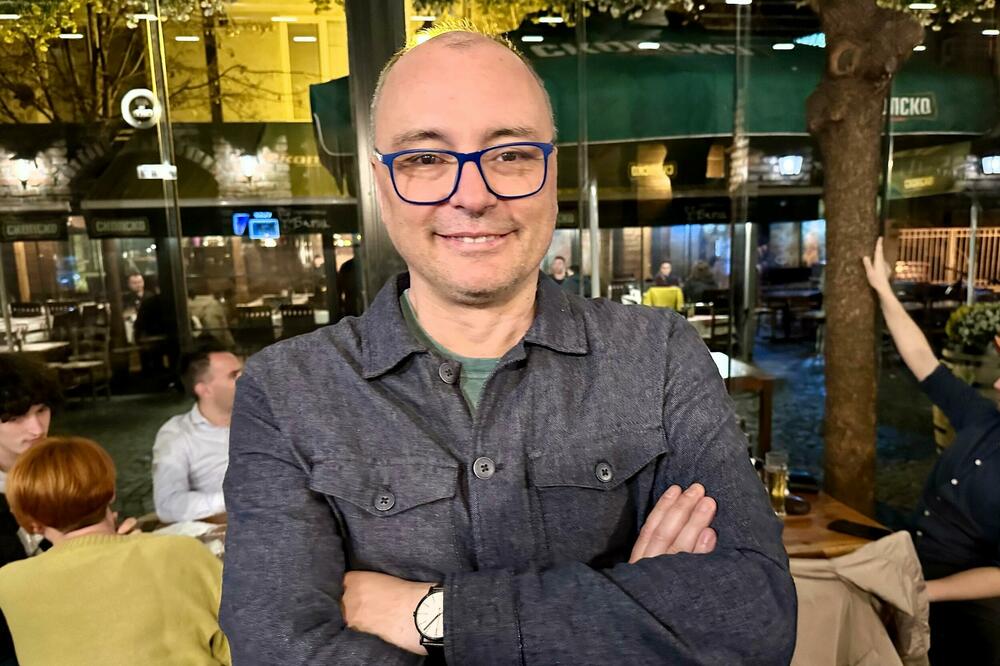I met Vlatko in Mostar. On the Old Bridge, the Macedonian multi-talent offered my companion and me to take our cell phones and take a decent photo, instead of the selfie for which we craned our necks over the Neretva. My companion did not recognize the face from the bus that was transporting the literary excursion of the participants of the Sarajevo Poetry Days. She thought that the unknown man wanted to get hold of our mobile.
What would happen next? So the thief would rush down the steep foothills and slip into the tourist crowd of the surrounding alleys. Or he would simply jump into the Neretva. Or what do I know? It turns out that friendly Vlatko is completely harmless. He just wanted to get to know each other. And we did it, first over a beer in Mostar, then over a pie in Sarajevo. Then the cards of fate turned, I was more often in Leskovac than in Bosnia, so our visits to Skopje became more frequent. And there we were able to hang out in the bars of Skopje. He once took us to the Kotur club, to hear what a jazz virtuoso can do. "For me, music is a true passion, an art that mobilizes both soul and body, intuition and imagination... Music is the art that most easily transcends all barriers...", Vlatko explains his passion.
We met once unplanned and in Ohrid. Well, in Belgrade, where we ran into each other by chance. So again in Skopje, this time in the home of the Martinovskis. His wife Verica is successfully engaged in design, they have two adult sons, Filip and Pavel. Filip is studying fine arts and we will hear more about him.
We also hung out at the Skopje Literary Festival. Well, in Kraljevo, where we had the same publisher, and we didn't even know that.
Youth cultural center
This March gathering was something special. In the Youth Cultural Center, where the Skopje publisher once presented my book translated into Macedonian, there was an exhibition that I couldn't miss.
That's why I didn't hesitate to walk on Dimitar Vlahov Quay on the first morning in Skopje, after a poorly slept night, since the plane from Cologne was delayed by hours, so I didn't leave the airport until around three in the morning. I am in Skopje so often that I completely ignore the buildings and monuments in the center - I am no longer surprised by them. But I once wrote: The invisible scars on the invisible map of the city are like musical notes. Whoever knows how to see them will play the entire endless chronicle of those historical carvings, will turn the soul of the city into sound. I peeked into the electronic data on Dimitar Vlahov, the man immortalized in the name of the street I walk down. In the 20th century, he managed to become a member of the Ottoman Parliament, a Bulgarian consul, a Macedonian communist, and Tito's Yugoslav cadre. It was as if he had lived multiple lives.
In that street, on the west bank of Vardar, is the Youth Cultural Center - MKC. It was founded in 1972 under the name "Youth Center - 25 May".
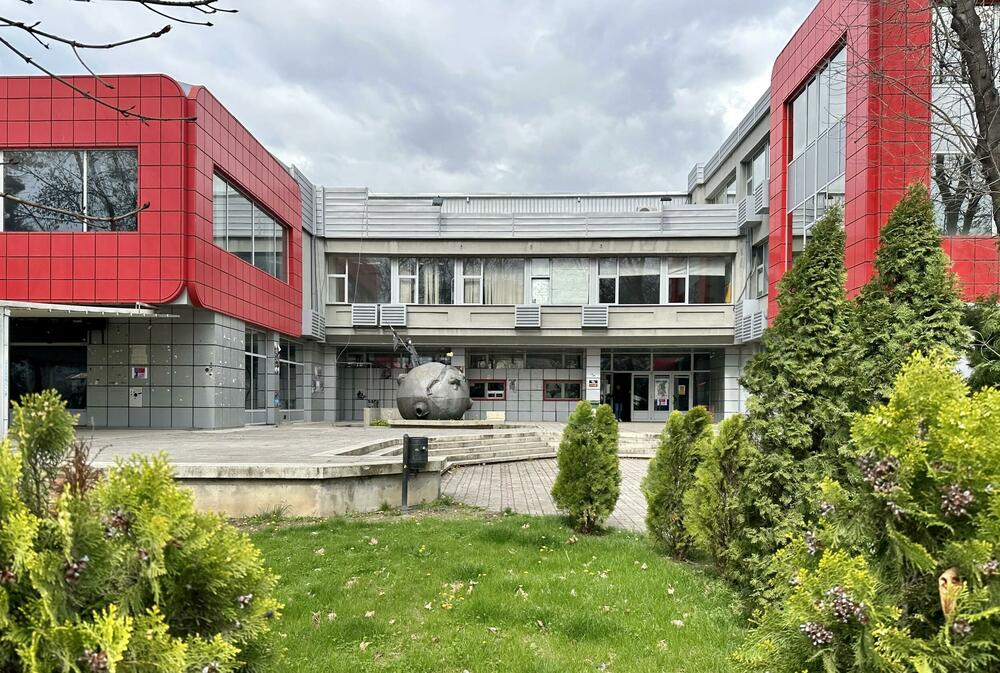
It is one of the most important cultural institutions of the country, where people who love music, film, theater, literature, and painting gather.
The exhibition "Sound Pictures" was set up in the MKC Gallery. And it was signed by our friend from Mostar-Skopje, Vladimir Martinovski. I knew something about the origin of his works. The application for painting on a smartphone was to Vlatko what the palette, brush and colors were to painters until recently. He would sometimes post his color drawings on social media. I wanted that man to illustrate my next book. It totally hit my taste buds.
Sound pictures
I enter the empty hall, the mustachioed doorman asks me where I'm going. I tell him that I would like to see Vladimir Martinovski's exhibition. He gets up, moves the sliding door and lets me into the bright gallery space. Only later did I find out that I had come outside of working hours and that the porter had let me in to see the exhibition without grumbling. I take a very nicely done catalog.

On the cover page of the catalog is the picture "Rhythm of the Sun". In the foreword, the author of these unusual, fresh, playful paintings says: "During the concerts (mainly at the Skopje Jazz Festival and Off Fest) without notice, but rather infectiously, the urge to draw comes back to me. While musicians use their fingers to play keyboards, strings, brass instruments and percussion, my fingers like to play dashes. It's as if something is forcing me to translate the passion of listening to beautiful music into a picture".
And all of that is true. Here you can see the passion of listening transformed into lines, shapes, colors. It's as if the dramatic, ecstatic, contemplative moments of some sound events are really frozen in a millisecond, as if we're seeing the color of a sound curtain for the first time.
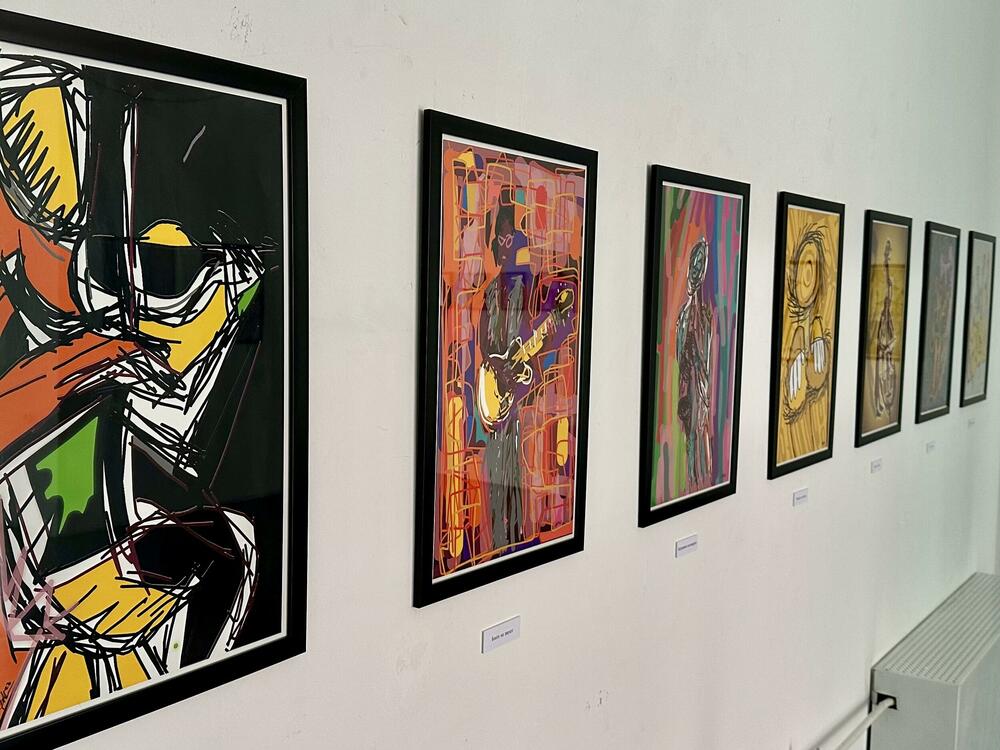
"It wasn't my idea to faithfully photograph musicians playing on stage, photographs do that a million times better. The drawings created in an improvisational, somewhat 'jazzer' way are my attempt to say 'thank you' to them in a visual way, painting above all my experience of their sound", says Vlatko.
Faced with the painting called Alba, I have to distinguish three things. First, I seem to recognize a double bass, a saxophone, and another wind instrument. Second, the dominant color is orange, in one of the possible interpretations of the colors of climax in carnal love.
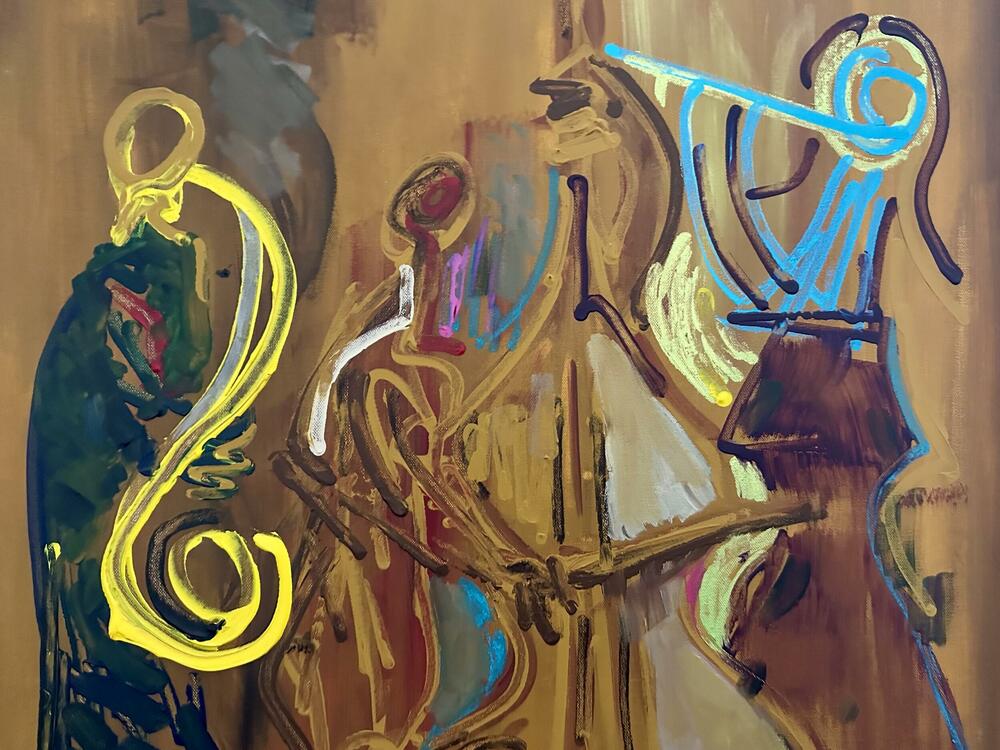
Alba - a song by Provençal troubadours that talks about the night of love and the dawn that brings lovers the sadness of parting is the third association. If I were to turn this Vlatko painting into sound, it would be a long, slow jazz in a hot summer dawn.
Biography of a versatile artist
Vladimir Martinovski was born in 1974 in Skopje, he is two years younger than the Youth Cultural Center where he exhibits. He published ten books of poetry, two poetry books for children, one book of stories and even three books of the originally Japanese literary form of haibun. If we add to this ten books of studies and essays and eight anthologies signed by him, then it is clear that Vlatko writes with ease. In fact, that ease permeates everything he does.
Vlatko plays in the band - I listened to their improvisation for a whole evening. I'd better let him list his musical experiences: "I play the kaval and various traditional flutes, tamboura, oud, prim, bass guitar, kahon and various traditional percussion instruments." I played in the Pece Atanasovski Orchestra, the bands Baklava, Kaldrma, Okrugli sto, Tiho Proljeće and Brothers Band..."
On top of all that, this man is also the dean of the Faculty of Philology in Skopje.
The poet Martinovski actually knows that Arthur Rimbaud also wrote the poem Vowels, giving each of them a color: A black, E white, I rujno, O blue, U green. Synesthesia is the gift to see sound as color, picture evokes smell, senses are combined and intertwined. The synesthetic approach led Vlatko to see sound. And that he knows how to sketch it on the screen.
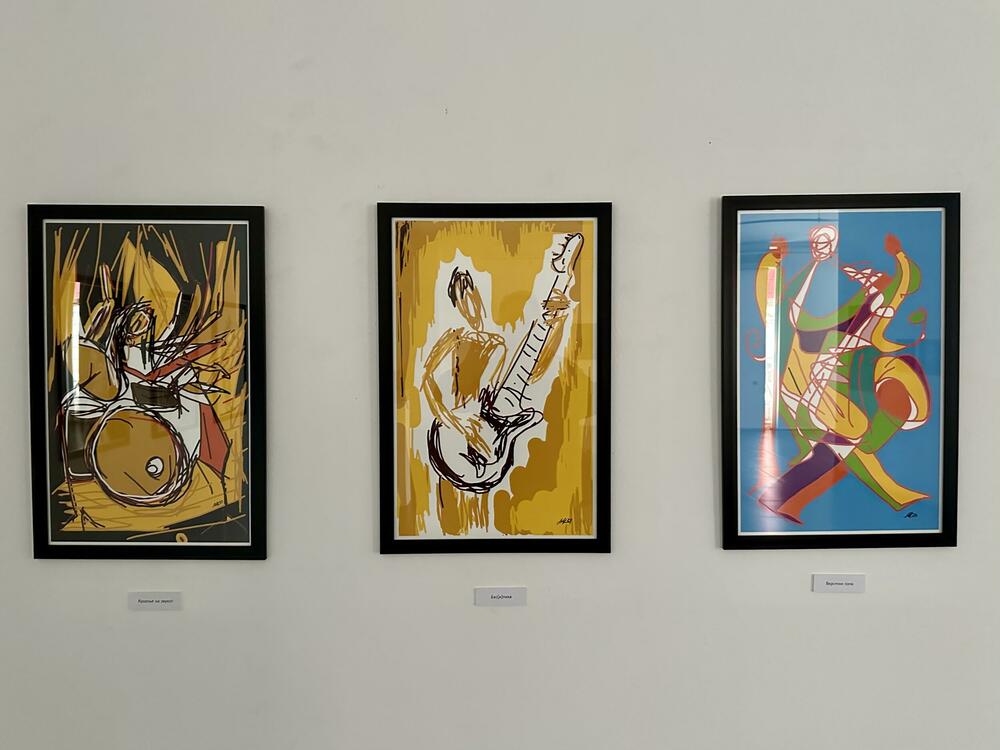
"For me, all arts are connected and part of some big whole, so my experiences with different arts open up new perspectives for other arts," says Vlatko.
He is also good with words. The pictures are called "Crossed solos", "Encore in the rain", "Searching for a band", "The sound of shadows", "Breaking the air", "The color of sound", "The bow and the fool"...
And he is also good with colors - the color is Mediterranean - from Portugal to Sicily, from West African lagoons to the Greek islands, fishermen paint their boats just so juicy. North Macedonia, as a distinct Mediterranean without a sea, shows its essence not only with its first-class wines, the way it sings and mourns, but - here - also with exhibitions like this one.
A song of silent pictures
"When I listen to music, I often close my eyes and see images from the inside of my eyelids. This exhibition has an apparently inverted perspective: I hope that at least one 'silent' picture will arouse a sound, a song, a melody in at least one viewer..." This is Vlatko's message to us who are watching.
Poet Martinovski was recently published by Povelja iz Kraljevo in the book "Inner Mountains". The translation from Macedonian is less melodious than the original, but quite good for entering the world of this poet.

In the poem "Silent Dinner", the poet says: "After five decades, five poets from five neighboring countries, noisily remember the gatherings of their youth..." The already mentioned Rimbo would imagine the noisy gathering with the music: "Oh, supreme Trumpet, full of crazy screams". And Vlatko's poem ends like this: "At the end of the dinner, the music also dries up." Everything goes quiet. Except for some loudmouth who continues to solo".
And that is it. Vlatko likes to play. And through play - as Nietzsche teaches us - it reaches the best form of maturity. The child's seriousness at play.
He must have written down the score for that solo, then written the song and sketched the picture on his cell phone. Three in one, renaissance man in the digital era.
Bonus video:



